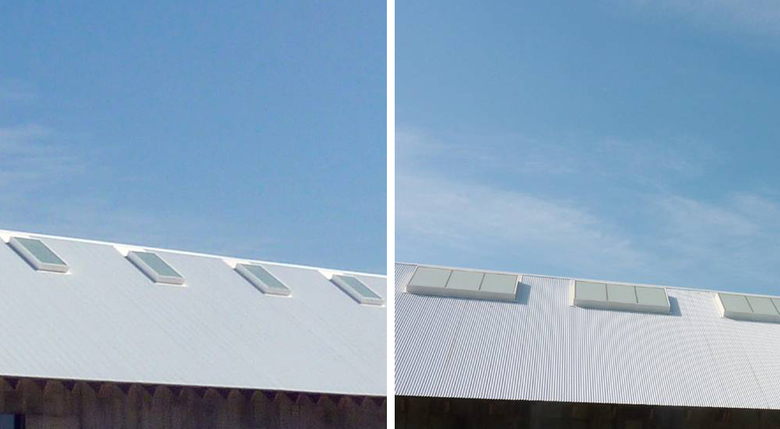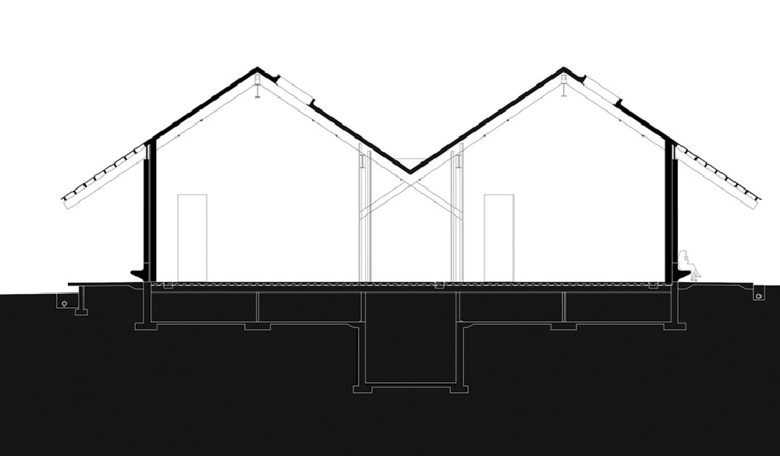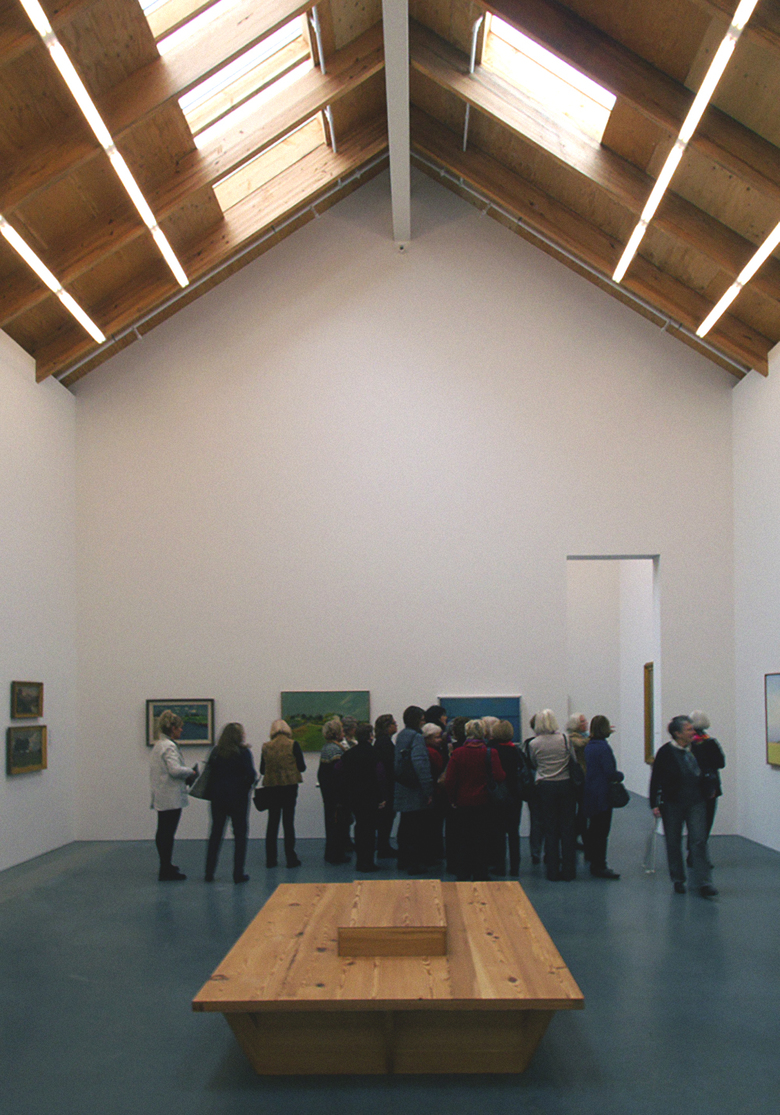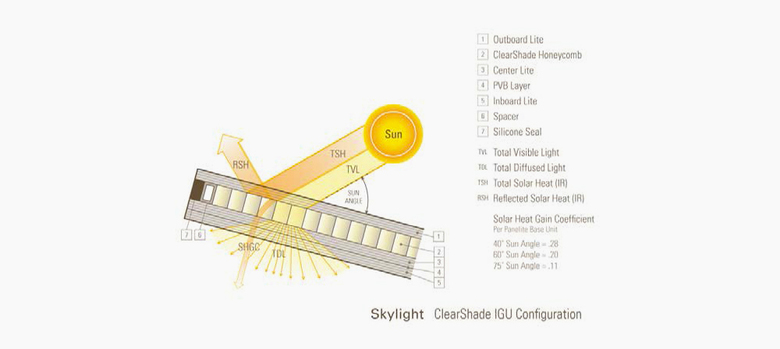Panelite at Parrish Art Museum
John Hill
3. March 2014
Photo: Matthu Placek
Museumgoers these days are not content with galleries solely illuminated by artificial light; they appreciate the variability that comes from natural light. In response, architects, lighting designers and manufacturers need to be creative with apertures that do not damage the artworks on display. In the Herzog & de Meuron-designed Parrish Art Museum on Long Island, Panelite's ClearShade IGU (Insulated Glazing Units) skylights with honeycomb cores scatter the sunlight entering the gable-capped galleries.
South roof slope on left, north roof slope on right. Photo: Courtesy of Parrish Art Museum
Photo: John Hill/World-Architects
A recently published study (PDF link) from the Lighting Research Center at Rensselaer Polytechnic Institute on "glazing with integral honeycomb baffles" uses the Parrish Art Museum as a case study. Researchers from the center's DELTA (Demonstration and Evaluation of Lighting Technologies and Applications) program field evaluated the effects of the honeycomb baffles, a material that provides clear views when looked at directly but appears the color of the baffle (typically white) when seen from an oblique angle.
Building section drawing courtesy of Parrish Art Museum
Photo: John Hill/World-Architects
Skylights at the Parrish Art Museum face both north and south; the former are clusters of three skylights with the ClearShade product, while the latter are single conventional skylights incorporating a translucent film. Fluorescent lights with dimming ballasts are mounted in two strips below each set of skylights, controlled by the staff to step up the output of the lighting when needed. On sunny days these strips are turned off, but when World-Architects visited on a rainy day in late 2012 the lights were on to help achieve the desired 20-25 footcandles for the paintings on display.
Photo: John Hill/World-Architects
Image: Courtesy of Panelite
DELTA's evaluation consisted of two parts: measuring daylight illuminance in a typical gallery on a clear day around the time of the summer solstice, when the artificial strip lights were turned off; and surveying museum visitors on spring and summer visits, with the lights off on both days. The measurements revealed up to 110 footcandles on the floor but a peak range of 40-60 footcandles on the walls at noon, falling within acceptable conservation limits for the museum. The surveys overwhelmingly revealed that visitors could see the art clearly, with a small percentage stating the light was too bright or too dim. Three out of four museum goers considered the lighting superior to other museums.
In addition to the illuminance levels and visitor satisfaction, the DELTA researchers concluded that the limited need for artificial lighting results in lighting energy savings of 82%, making another good argument for products like ClearShade. Unfortunately those savings will most likely be offset by additional equipment the museum needs to install to heat the air in the skylight wells, so that condensation in the winter does not continue. Regardless, the museum should be happy since the visitors are pleased with the galleries illuminated by the sun overhead.






